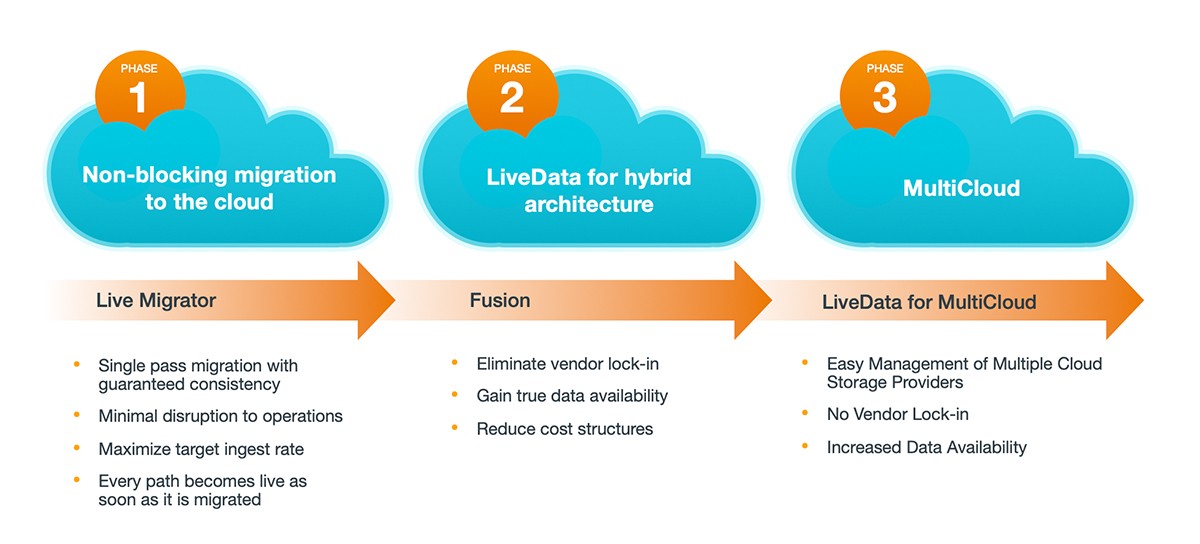What is Hybrid Cloud?
By Van Diamandakis
Mar 29, 2020
Since a recent Forrester report found that 88% of companies are now adopting a hybrid IT approach, and 89% are aware that a hybrid cloud strategy is a key part of that adoption – it’s a good time to step back and recall what hybrid cloud is and why it’s enjoying such popularity.
Hybrid Cloud Defined
“Hybrid cloud” refers to a cloud computing environment comprising public cloud, private cloud, on-premise, and third-party data storage and computing solutions – all tightly orchestrated between them.
This sounds straightforward, but the tools and skillset needed to make it happen are anything but trivial, as we’ll see below.
Why Do I Need Hybrid Cloud?
With data storage and computing resource demands growing exponentially, companies struggle to meet user and customer demand while still keeping operational overhead and capital expenses in check.
Hybrid cloud solutions offer organizations the flexibility to seamlessly shift workloads between on-prem and cloud environments – effectively adapting to fluctuating demand and costs. Moreover, adopting a hybrid cloud model dramatically reduces the need for intensive capital expenditures when demand peaks. The essence of hybrid cloud is “choose what you use” – paying for resources temporarily instead of investing in infrastructure that remains dormant most of the time.
And finally, geographic-specific data privacy regulations like GDPR, CCPA and others contain strict data storage requirements. In some cases, certain data must be stored in a certain location to maintain compliance. In others, data must be geographically distributed to ensure integrity. A hybrid cloud solution allows organizations the flexibility required to adapt to existing, evolving and emerging regulatory challenges.
How Do I Migrate to Hybrid Cloud Successfully?
The creation of an effective, well-conceived transition framework is a crucial first step in moving to a hybrid cloud model. Among the first questions companies should ask is: which new applications need to be on-prem, and which can be launched in the cloud? Also, companies need to consider which legacy applications can remain on-prem, and which need to be migrated and replicated – an often-complex process with serious operational overhead and risk if done manually using legacy techniques.
Then, there’s the question of data. Migrating business-critical big data to the cloud while maintaining consistency and business continuity is tricky and demands technical prowess. In fact, more than half of big data migration efforts are either harder to complete than expected or fail outright. The core issue is that data and its context are not static. Rather, these constantly change. Since business doesn’t stop during migration – data changes even as it’s migrated. So, by the time a migrated dataset is available, the business ecosystem it came from may have changed so radically that the data is hardly relevant.
To address these issues, WANdisco developed LiveMigrator – which enables non-blocking file system read/write so that during petabyte-scale migration, applications can still fully access, ingest, and update data. This offers enterprises ironclad data consistency and usability both during and after their cloud migration.
What About Data Analytics?
From a data analytics perspective, hybrid cloud is essentially a step on the road to replicating data analytics fully to the cloud. Looking at the three steps of data migration, hybrid cloud is the middle step, as per the diagram below.
In a hybrid cloud scenario, data resides both in the cloud and on-prem - allowing testing of applications which may function differently in the cloud. By having the data in two places at the same time, companies can test and perfect these applications for cloud usage, running them in the cloud and on-prem to ensure that both produce the same set of results. Once the data is in the cloud, and the apps that process that data work properly, companies can consider moving data analytics fully to the cloud.
The Bottom Line
Hybrid cloud is a big step toward the future of flexible, cost-effective yet secure and powerful enterprise computing. While the benefits of hybrid cloud are clear, the path to migration is bumpy. To get the most from their hybrid cloud solutions, organizations need to create a detailed migration plan and adopt dedicated hybrid cloud solutions like LiveMigrator.
About the author

Van Diamandakis, SVP of Marketing, WANdisco
Van is a proven Silicon Valley technology executive with over 25 years of operational experience that draws upon his track record leading global marketing transformations, driving to meaningful financial events including IPOs and acquisitions. Van has been at the forefront of B2B technology marketing and brings a unique ability to marry creativity, data, technology and leadership skills to rapidly build brand equity and successfully navigate tech companies through inflection points, accelerating revenue growth and valuation.

